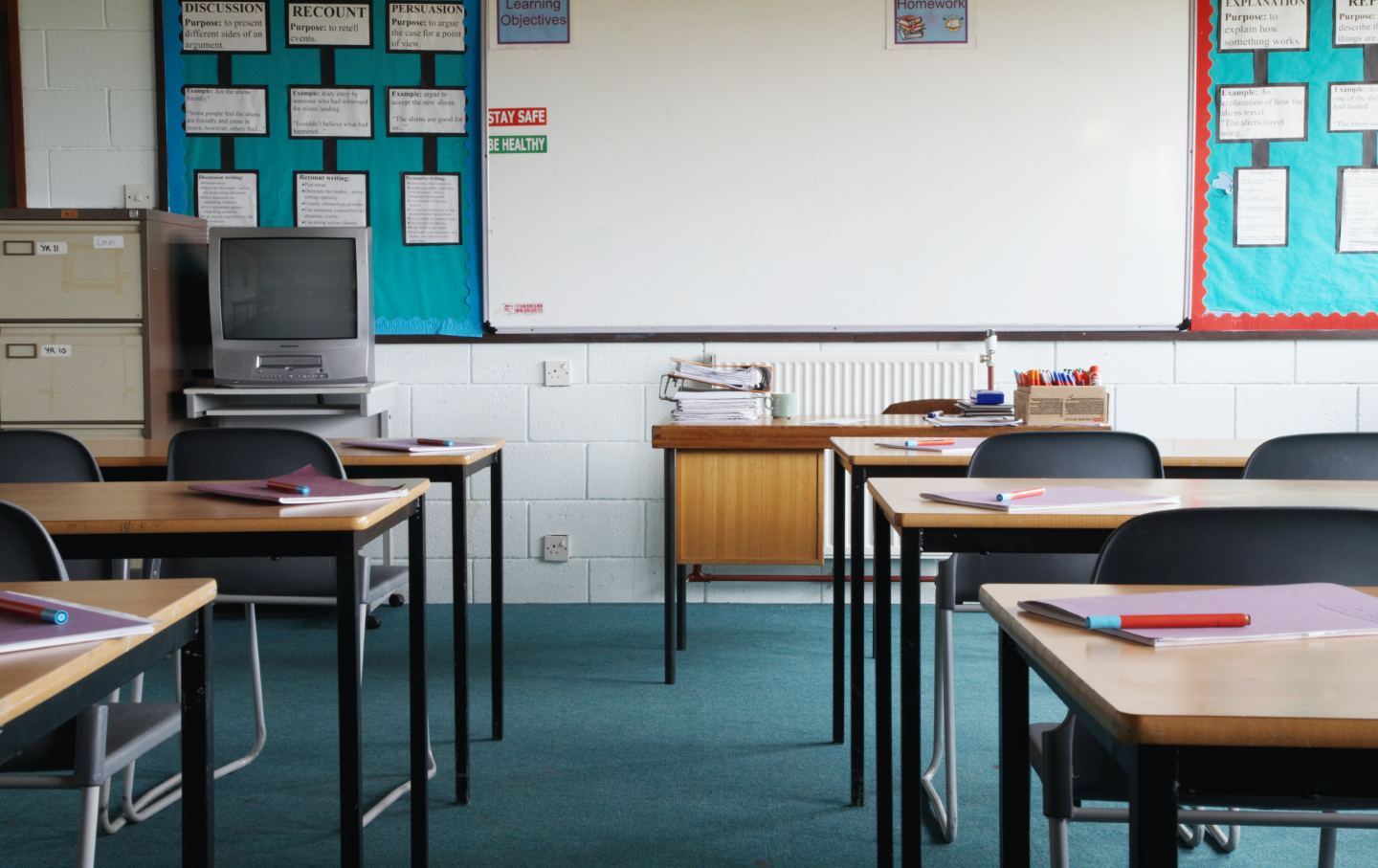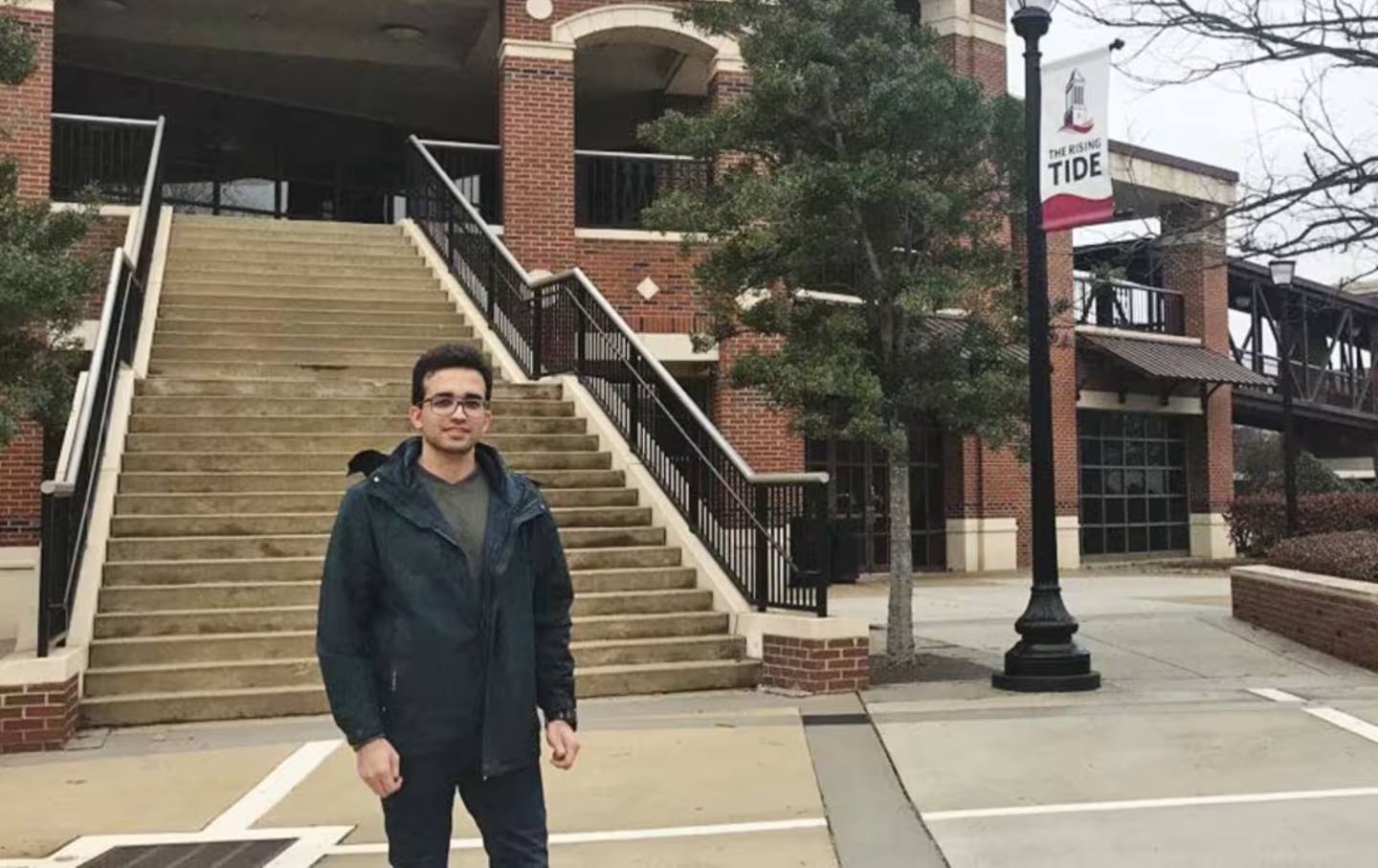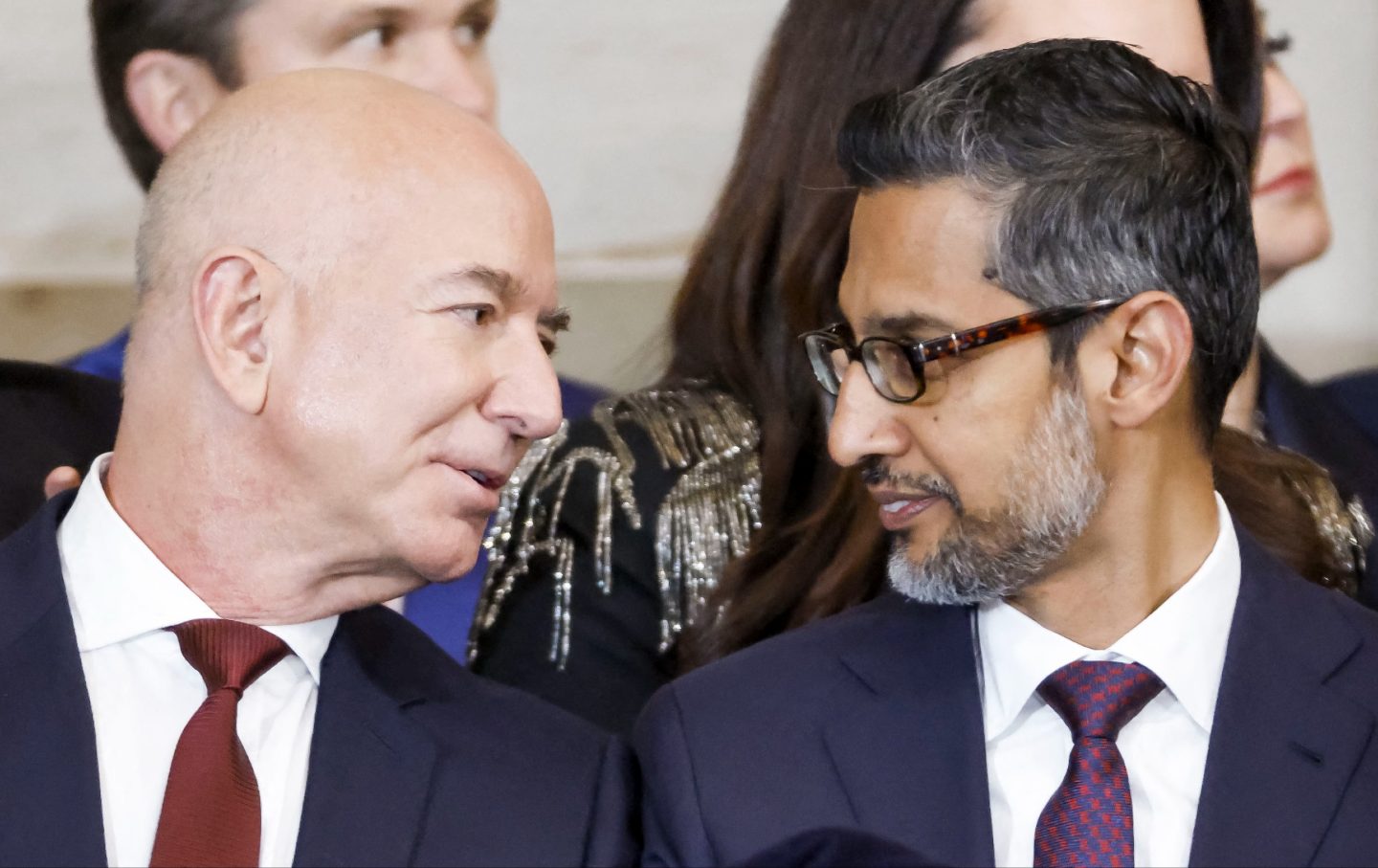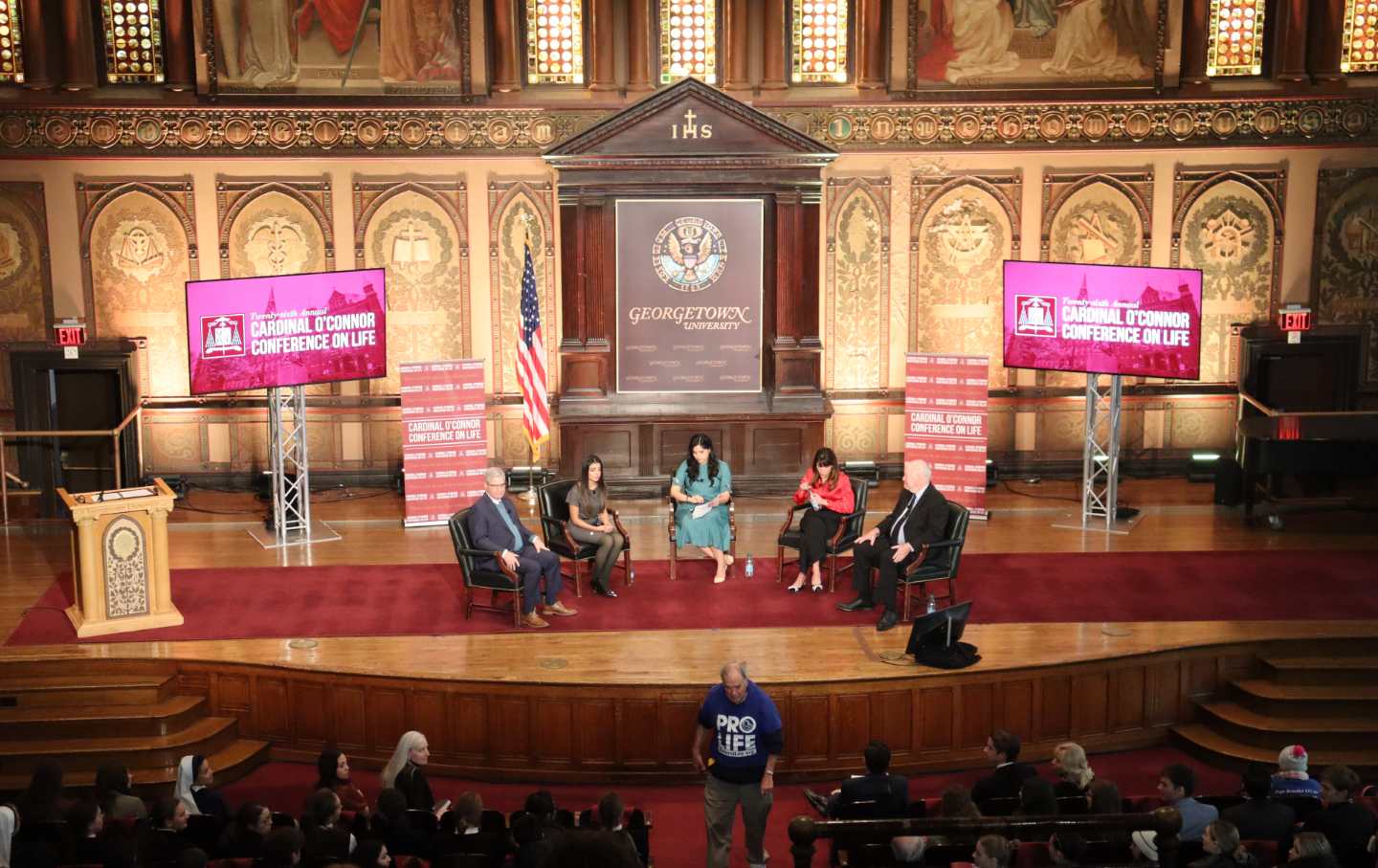The “Existential Threat” Facing Ohio’s Public School System
A lawsuit challenging the EdChoice voucher program was filed by a coalition of over 130 school districts across the state and is scheduled to go to trial next year.

William Phillis started teaching in 1958. “I’ve always liked the idea of schooling. I’ve always liked the idea of the public school system,” said Phillis. Only five years before, the people of Ohio passed a constitutional amendment to create a Board of Education, and schooling in the state was changing rapidly. “The state started making progress in terms of curriculum and programs for kids,” he said. “At that point in time, there was no vocation, there were no charter schools, there were no vouchers.”
School vouchers are public funds that help parents pay for education at private schools—ostensibly to give children in low-performing public schools the chance to attend a participating private school. The first major voucher programs were introduced in the 1990s. “There’s only going to be a certain portion of the state general revenue fund going to education,” Phillis said. “And so for every dollar that’s taken out of school districts and given to charters and vouchers, it’s a dollar less that’s provided for public education.”
The Cleveland Scholarship Program was started in 1996, which allowed Cleveland parents to use public money for tuition at private schools as well as allowing students to attend schools in neighboring districts. The Educational Choice Scholarship expanded the program in 2005. Last year, House Bill 33 revised the EdChoice program to include all students— regardless of school district performance or family income. Ohio now spends more than $970 million on private school voucher scholarships.
According to Phillis, who is now the executive director of the Ohio Coalition for Equity & Adequacy of School Funding, the expansion of the voucher program has been to the detriment of public schools.
Vouchers Hurt Ohio, a coalition of over 130 school districts across the state, filed a lawsuit in January 2022 challenging EdChoice as unconstitutional. “The EdChoice Scholarship Program poses an existential threat to Ohio’s public school system,” reads the lawsuit. “Not only does this voucher program unconstitutionally usurp Ohio’s public tax dollars to subsidize private school tuitions, it does so by depleting Ohio’s foundation funding – the pool of money out of which the state funds Ohio’s public schools – otherwise available to already struggling school districts for the education of their students.”
One of the primary arguments from advocates for voucher programs is that they help low-income families get a better education than they could from public schools. But data shows that the majority of students benefiting from EdChoice and the expansion were from affluent families already enrolled in private school. In Montgomery, Miami, Greene, Warren, Butler and Clark counties, for example, use of EdChoice vouchers increased by 313 percent, according to Dayton Daily News reporter Eileen McClory, but enrollment at schools that accept vouchers grew by only 3.7 percent. “More and more vouchers” are “being awarded to students who were already attending private schools,” reads a2023 report by the Ohio Education Policy Institute. “In FY19, only 7% of new EdChoice voucher recipients had attended private school the year prior, however in FY23 nearly 55% of new voucher recipients were already attending private schools.”
“In my district, over 90 percent of the students who were using vouchers years ago had never set foot in one of our public schools,” said Dan Heintz, a member of the Cleveland Heights-University Heights Board of Education and a supporter of the Vouchers Hurt Ohio lawsuit. “The whole notion that people were using vouchers to escape failing public schools was nonsense, because the kids had never attended,” he said. “The only thing that they were escaping is a tuition bill.”
Data from the Ohio Department of Education and Workforce shows that of the 1,817 students in Cleveland Heights-University Heights who use EdChoice, 73.69 percent are “not low-income qualified,” meaning their household income doesn’t fall below 200 percent of the federal poverty guidelines. And reporting from Cleveland.com found that despite an increase in students receiving Edchoice scholarships in the Cleveland area, those districts haven’t seen a substantial loss in student population.
According to Heintz, the state left him and his colleagues no choice but to sue. “We were forced to do it by the Ohio legislature,” he said. “We tried everything else…we went to Columbus and we gave testimony in hearings. We hired lobbyists. And everything that we tried was ignored by our extremely gerrymandered legislature.” At one point, his district was losing $16 million a year to the voucher program. “That was 16 million coming out of what we could put in front of the students in our desks.”
Chad Aldis, vice president of Ohio policy for the Thomas Fordham Institute, a Koch-linked conservative think tank based in Washington, DC, acknowledged that many EdChoice users were already enrolled in private schools, but said there were provisions in the program that explicitly benefitted low-income families. Aldis also argues that because of changes in how Ohio schools are funded, the financial burden on schools is no longer a factor. Voucher funding comes directly from the state of Ohio without passing through district budgets.” Now, when a student leaves a district, it’s much more akin to as if the student moves to Indiana, where the district can no longer claim the kid, but that’s because they’re not educating the student anymore.”
Many teachers argue this change made little difference, as public schools are still forced to focus on tax levies and property taxes to make up for lack of state support. “You could say that is equally damning to every district in the state,” said Heintz.
Polly Taylor Gerken, a member of the Toledo Public School board, spoke about her concerns for private schools excluding students in her community. “We had kids that would get put out because private schools don’t have to take a kid with a disability,” Gerken said. “They can discriminate based on race. They can discriminate based on disability. They can discriminate based on family composition. So it’s not about school choice because schools are the ones choosing kids.” Of the more than 40,000 students enrolled in EdChoice statewide in 2024, around 46 percent were white, and the EdChoice expansion is over 82 percent.
Popular
“swipe left below to view more authors”Swipe →An analysis from the Cleveland Plain Dealer published in 2017 also showed that 97 percent of the voucher program money goes to religious schools. “The Catholic Conference of Ohio supported EdChoice Expansion through advocacy with legislators and providing public testimony. Many parents also advocated directly with their representatives and senators for the EdChoice program,” wrote Michelle Duffey, the organization’s associate comms director. “Enabling more parents to choose a Catholic education benefits families and their local communities.”
Religious institutions have been pivotal in school voucher campaigns nationwide. “When vouchers started in the 1990s a lot of the money did go to private religious schools,” said Christopher Lubienski, a professor of education policy at Indiana University–Bloomington. “In Cleveland, when the Supreme Court weighed in on that, I think the number was 97 percent of the vouchers were being used at private religious schools,” he said. “You have this pretty substantial cash transfer from the public treasuries to private religious organizations.”
Originally dated for a ruling by the Ohio Supreme Court this November, the trial for the the Vouchers Hurt Ohio lawsuit was pushed to 2025 by a Franklin County Judge. It’s unclear what the outcome will be. Republicans won all three State Supreme Court races in 2024, expanding their majority, though the court has ruled EdChoice unconstitutional in previous years.
William Phillis hopes that Ohio’s government will begin prioritizing what really matters in education. “There are school districts that have had to cut art, music, physical education—a lot of programming out of the public system because the money’s not available to fund those programs. And it’s not that we don’t have enough money. It’s that a lot of the money for public education is being siphoned out of the public school system and given to charters and vouchers.”
Support independent journalism that exposes oligarchs and profiteers
Donald Trump’s cruel and chaotic second term is just getting started. In his first month back in office, Trump and his lackey Elon Musk (or is it the other way around?) have proven that nothing is safe from sacrifice at the altar of unchecked power and riches.
Only robust independent journalism can cut through the noise and offer clear-eyed reporting and analysis based on principle and conscience. That’s what The Nation has done for 160 years and that’s what we’re doing now.
Our independent journalism doesn’t allow injustice to go unnoticed or unchallenged—nor will we abandon hope for a better world. Our writers, editors, and fact-checkers are working relentlessly to keep you informed and empowered when so much of the media fails to do so out of credulity, fear, or fealty.
The Nation has seen unprecedented times before. We draw strength and guidance from our history of principled progressive journalism in times of crisis, and we are committed to continuing this legacy today.
We’re aiming to raise $25,000 during our Spring Fundraising Campaign to ensure that we have the resources to expose the oligarchs and profiteers attempting to loot our republic. Stand for bold independent journalism and donate to support The Nation today.
Onward,
Katrina vanden Heuvel
Editorial Director and Publisher, The Nation








